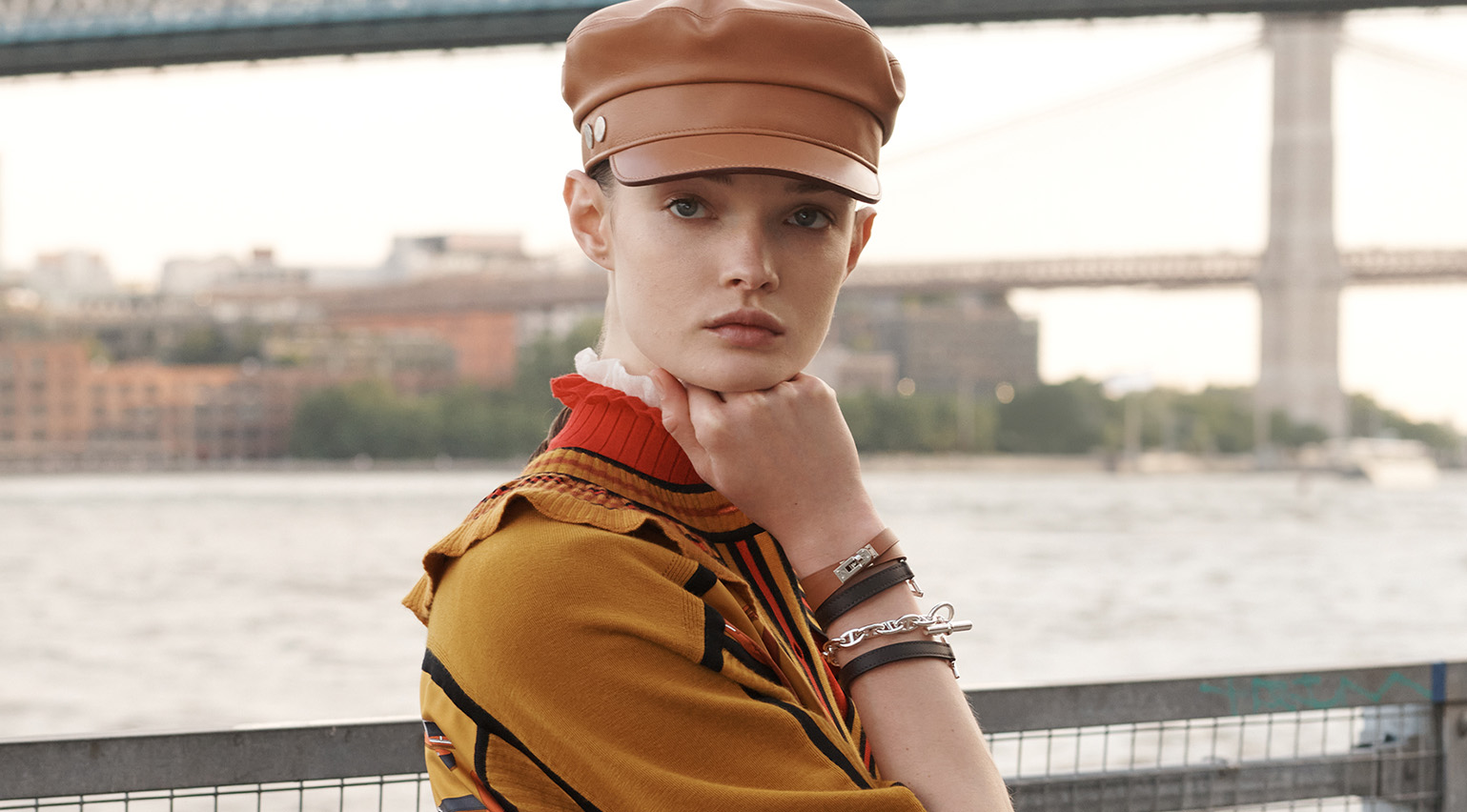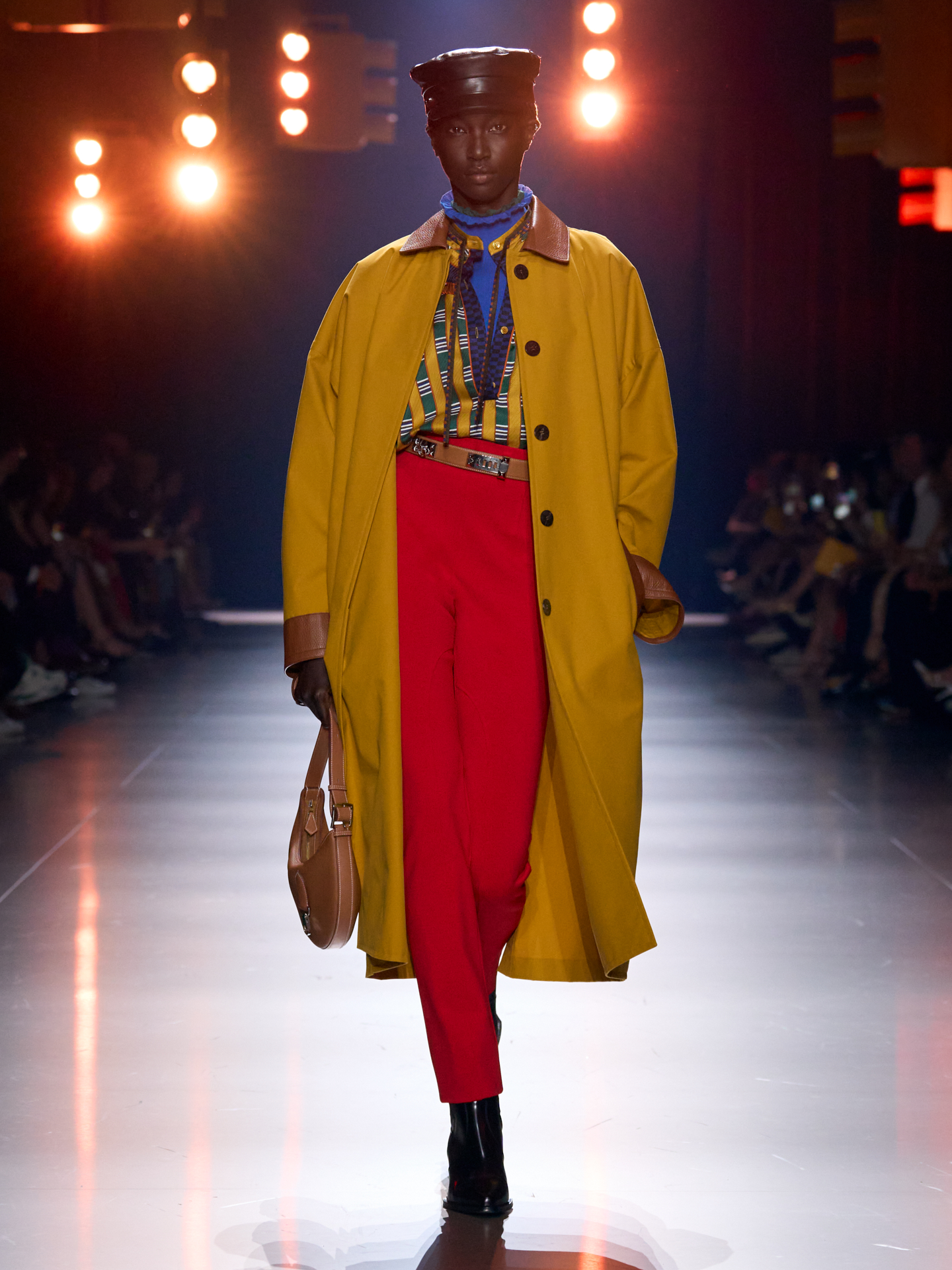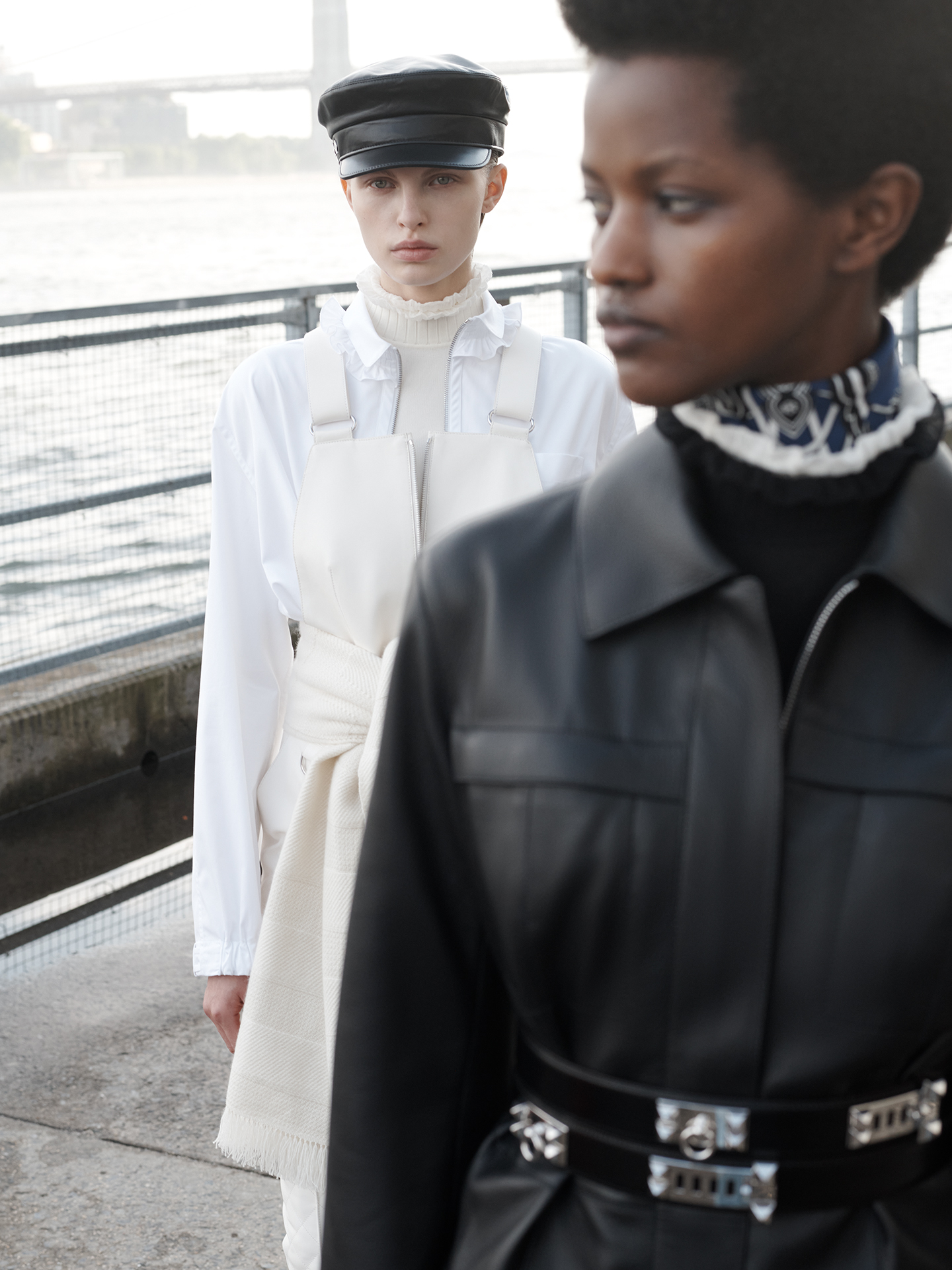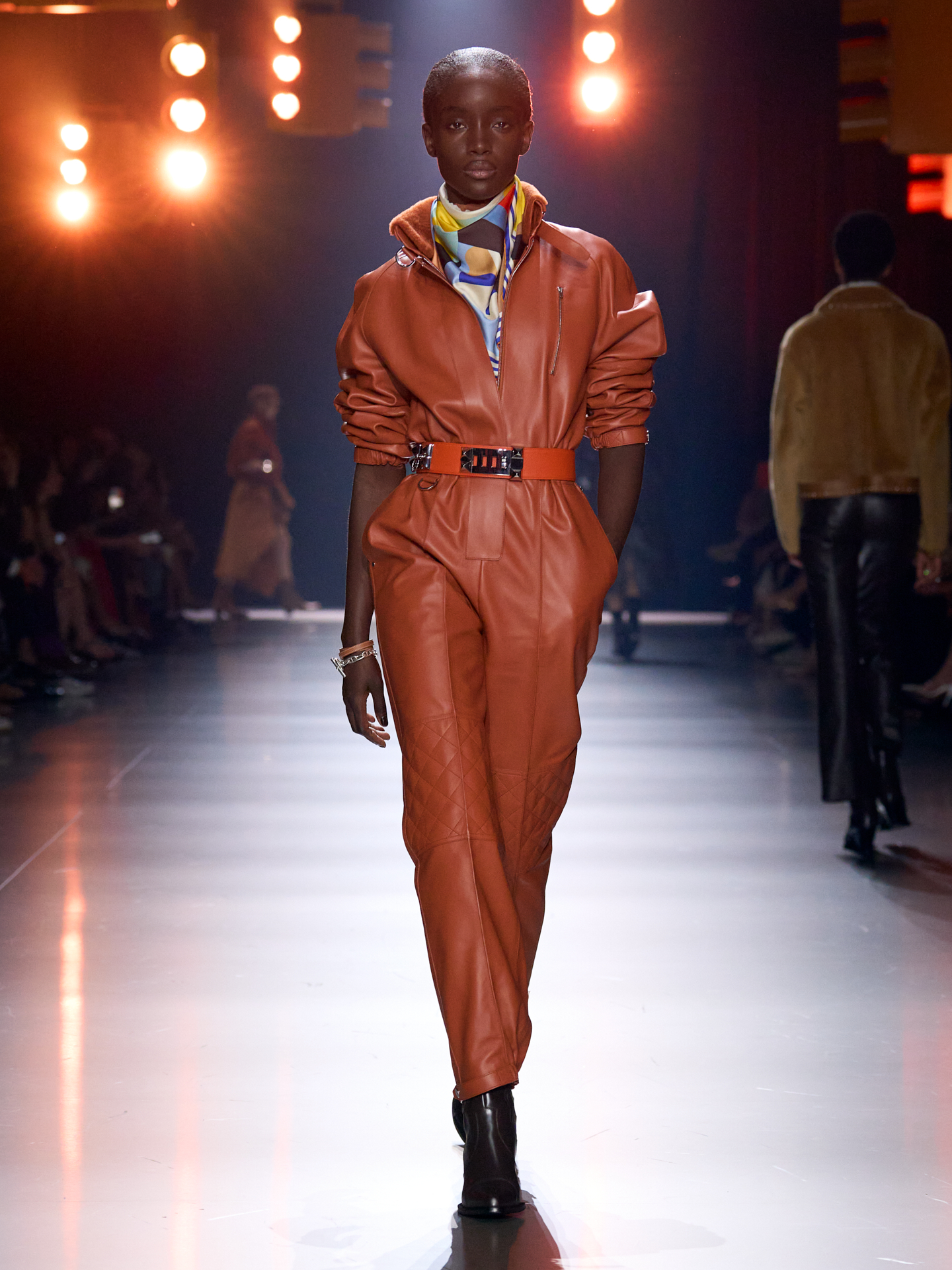
Nadège Vanhee is no stranger to New York. It is almost ten years to the day that Vanhee, who was previously based in the city as design director of The Row, was approached by Hermès to take over the Parisian house’s womenswear collections after the departure of Christophe Lemaire. Despite a lifelong love affair with New York, there are some offers – particularly as a French designer – you don’t turn down. In March 2015, she showed her first collection for Hermès; in the decade since, she has proved a steadfast presence, her pragmatic but sensual collections achieving a rare combination of critical acclaim and commercial success (no doubt part of the reason Hermès’ profits in 2023 rose 28 per cent to almost €4.3 billion).
And so, even though Vanhee is now based in Paris, and was born in Seclin, close to Lille on the French-Belgium border, yesterday evening’s one-off Hermès show held at Pier 36 in Manhattan’s Lower East Side, felt like something of a homecoming. Indeed the collection – which although shown as part of the resort season was titled Hermès A/W 2024 ‘The Second Chapter’ – saw Vanhee pay ’ode to the pace, energy and timeless optimism of New York City’, and had a celebratory mood. In the venue, New York’s recognisable yellow traffic lights hung from the ceiling, recalling the city’s busy intersections, and the seemingly endless flow of people on Manhattan’s sidewalks.
‘Pace, energy, optimism’: Hermès A/W 2024 The Second Chapter in New York

The collection itself was a colourful echo of Vanhee’s first A/W 2024 outing, shown in Paris earlier this year amid a deluge of rain (it was purposeful: Hermès had erected an enormous water system in the Garde Républicaine show space for the dramatic downpour). Titled ‘The Rider’, it saw Vanhee imagine a woman on the move: ‘astride a horse or a motorcycle… boldly she rides on’, said Hermès, with Vanhee combining traditional equestrian wear, a nod to the house’s roots in saddlery, with the tough, armour-like uniforms of bikers. Citing an ‘urban energy’ – in part influenced by observations of women in the street in New York, Paris and London, where she also spends time – pieces spanned richly luxurious takes on the biker boots and riding jacket, alongside sensual ribbed knitwear and quilted overcoats recalling those used for traditional outdoor pursuits.
For ‘The Second Chapter’, Vanhee struck a similar mood – once again, she noted the demands of city living as an inspiration point – albeit here in a boldly colourful palette of vermilion red, ’ginger’ yellow, and viridian. The richly layered looks drew inspiration from the city’s ‘layers of history, of exchange and desire’, here figured in an elegant pile-up of texture and pattern: from the silk Hermès carré tied around the waist or appearing in-set within ribbed knitwear, to soft leather boiler suits, quilted trousers, dots of studs, or the gently frilled necklines of turtle-neck sweaters that ran throughout.

Another reference was the house’s ‘Rocabar’ motif, originally inspired by the designs found on racehorse blankets of the 19th century. First appearing on an ochre-coloured woollen Hermès blanket with stripes in blue and coral, it has since been reimagined by the house in a multitude of colours and iterations, appearing across homeware, accessories and clothing (it is even the name of a 1998-launched fragrance). Vanhee chose the motif not simply for its vivid colour and graphic design – a mood which ran throughout the collection – but for the way it ‘conjures a tradition of play and collaboration across cultures and languages’, befitting Hermès’ transatlantic jaunt. So the story goes, in the 1930s, a Scottish saddler visiting the Hermès workshop called it a ‘rug à barre‘, a strange amalgam of the English word ‘rug’ and the French word for striped, ‘à barre’. After that, ‘Rocabar’ – another linguistic play – stuck.
The evening ended – as an Hermès show so often does – with a party, seeing the show space transformed into a for-one-night-only ’Rocabar’ nightclub, complete with performances by Rahill, Caroline Polachek and Honey Dijon, which, in homage to the city that never sleeps, went on long into the warm Manhattan night.








